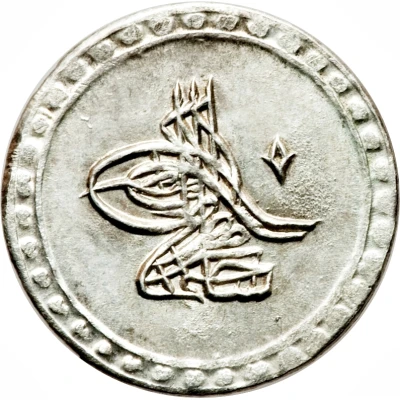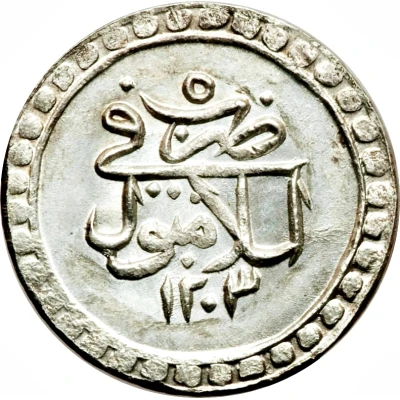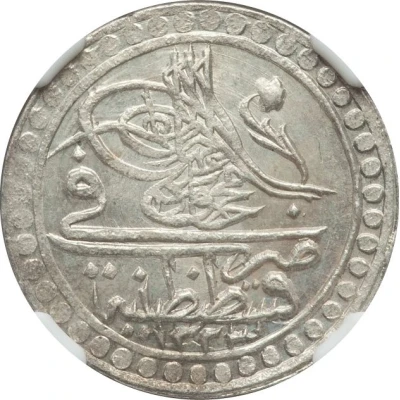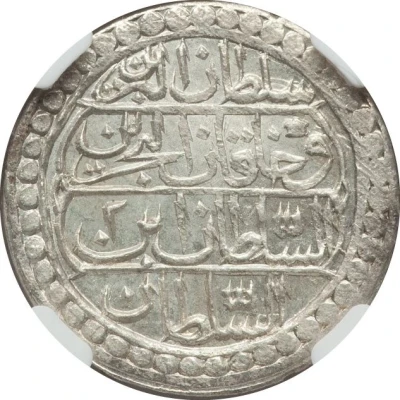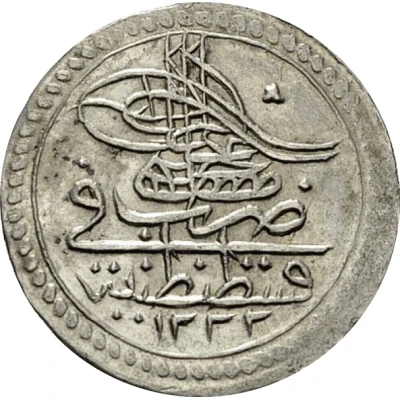
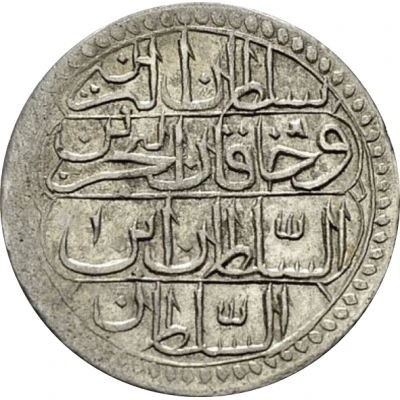

Onluk - Mustafa IV Kostantiniyye
1222 (1807-1808) years| Billon (.465 silver) | 3.14 g | 22 mm |
| Issuer | Ottoman Empire |
|---|---|
| Sultan | Mustafa IV (1807-1808) |
| Type | Standard circulation coin |
| Year | 1222 (1807-1808) |
| Calendar | Islamic (Hijri) |
| Value | 10 Para (¼) |
| Currency | Kuruş (1688-1844) |
| Composition | Billon (.465 silver) |
| Weight | 3.14 g |
| Diameter | 22 mm |
| Shape | Round |
| Demonetized | Yes |
| Updated | 2024-10-07 |
| Numista | N#59096 |
|---|---|
| Rarity index | 92% |
Reverse
Text, value
Script: Arabic
Lettering:
سلطان البرين
و خاقان البحرين
السلطان بن
السلطان
Comment
"سلطان البرين" والمقصود بها سلطان بر آسيا وبر أوروبا فى إشارة إلى اتساع ملك السلطان العثماني.أما كلمة خاقان، فهى تعريب اللفظ "قاغان" التركى بمعنى الملك أو صاحب السيادة العليا. وكان يلقب به رئيس الأسرة المغولية، صاحب السيادة العليا على كافة ولاة المغول فى أنحاء العالم. كما أن هذا اللقب قد استخدم بمصر فى عصر المماليك بواسطة السلطان قايتباي، كما استخدمه السلاطين العثمانيون للإشارة إلى سيادتهم على العرب والعجم والترك. والمقصود بالبحرين أى بحر الروم (البحر المتوسط) والبحر الأسود.
"سلطان البرين" means the Sultan of mainland Asia and Europe, in reference to the expansion of the king of the Ottoman Sultan.
The word Khakan is the Arabization of the Turkish word "Kağan" in the sense of the king or his supreme sovereign. He was nicknamed the head of the Mughal family, the supreme sovereign of all Mongol rulers around the world. This title was also used in Egypt during the Mamluk period by Sultan Qaytbay, and by the Ottoman sultans to refer to their sovereignty over the Arabs, and the Turks. What is meant in Bahrain " البحرين" is the Rum (Mediterranean) and the Black Sea.
Interesting fact
One interesting fact about the Onluk - Mustafa IV (Kostantiniyye) 1222 (1807-1808) coin from the Ottoman Empire is that it was made of Billon, which is an alloy of silver and other metals, in this case, containing 46.5% silver. This coin was issued during the reign of Sultan Mustafa IV, who ruled the Ottoman Empire from 1807 to 1808. Despite being made of a relatively low-value material, the coin still holds significant historical and numismatic value, providing a glimpse into the economic and monetary systems of the Ottoman Empire during that time period.
